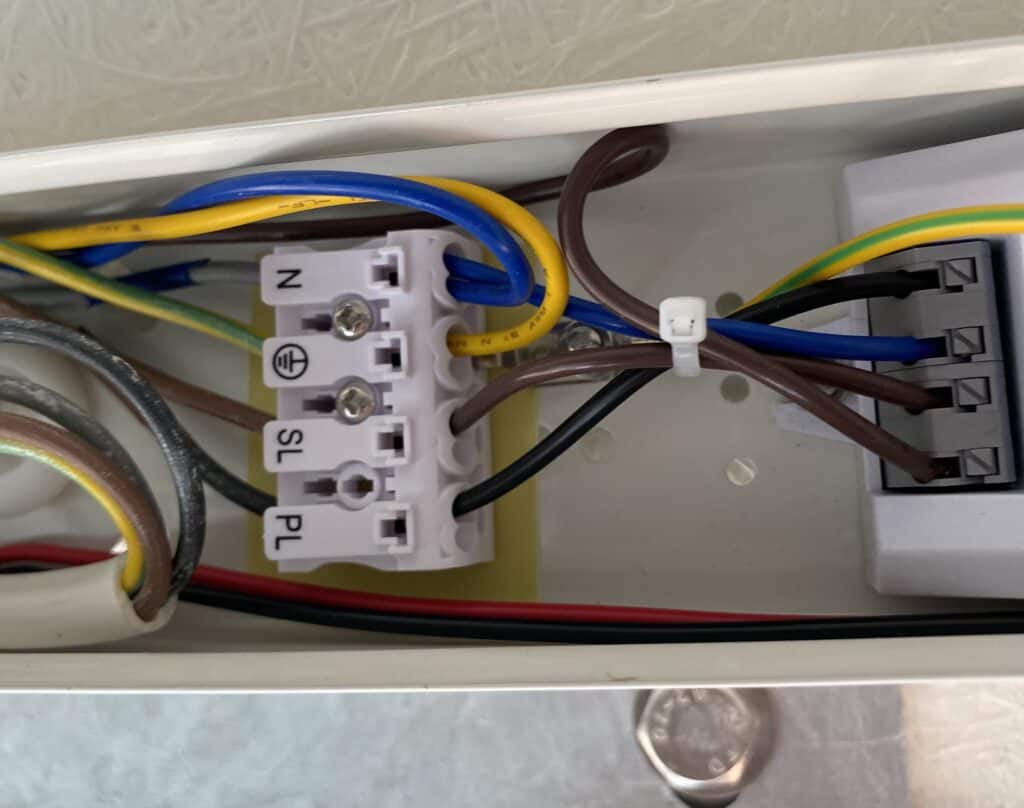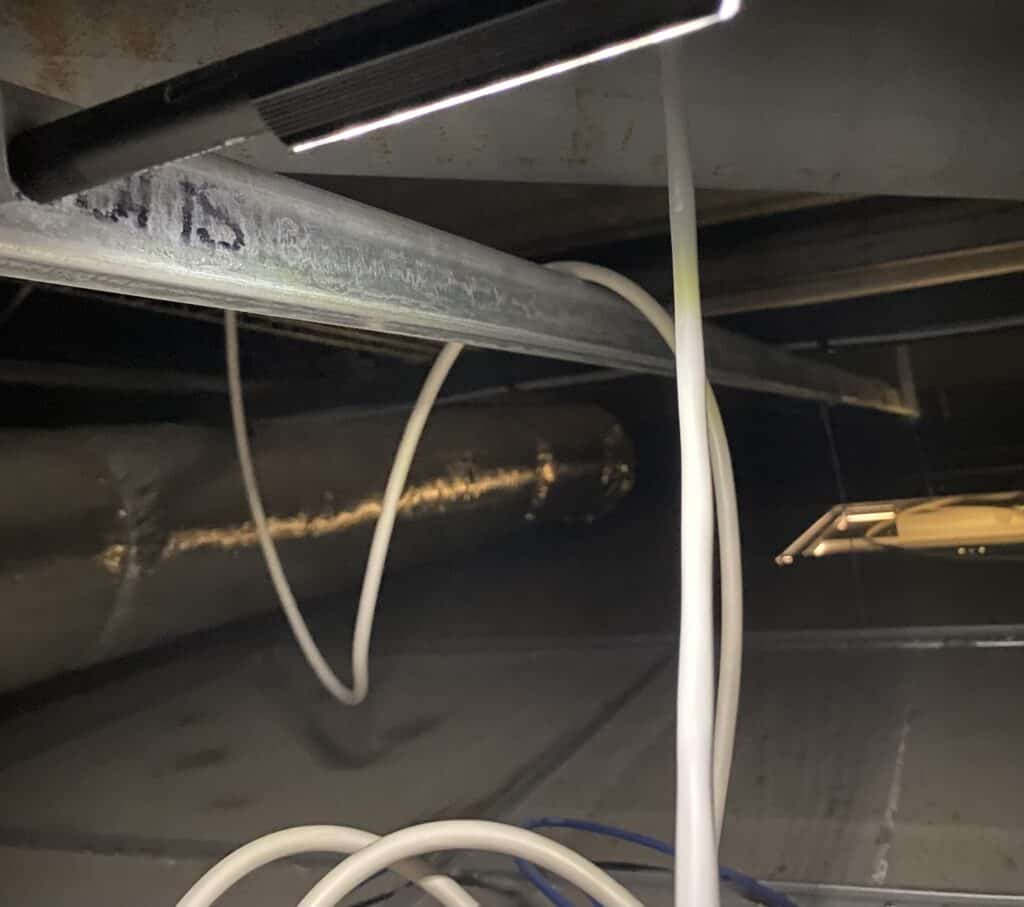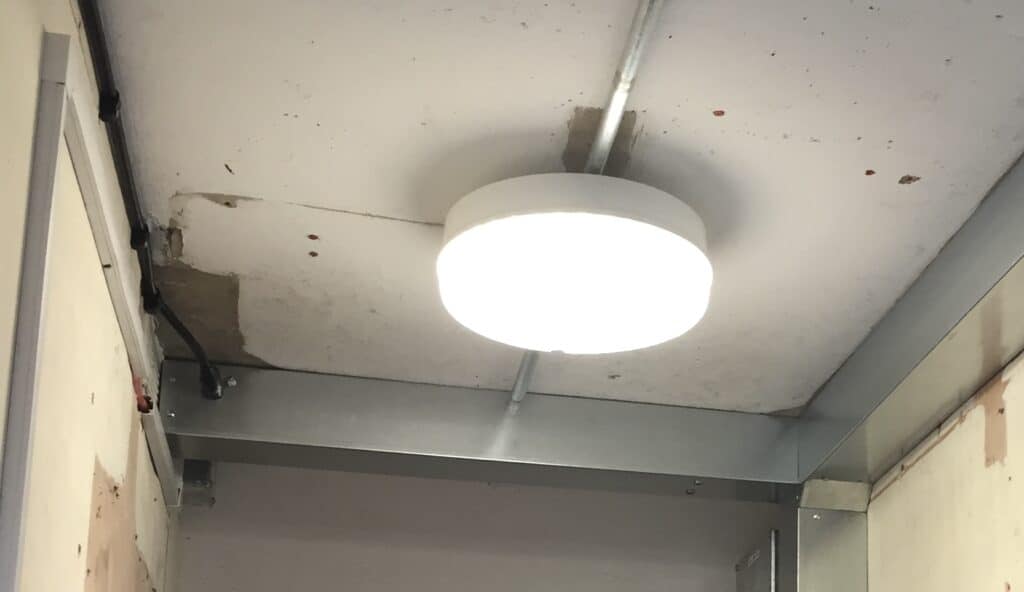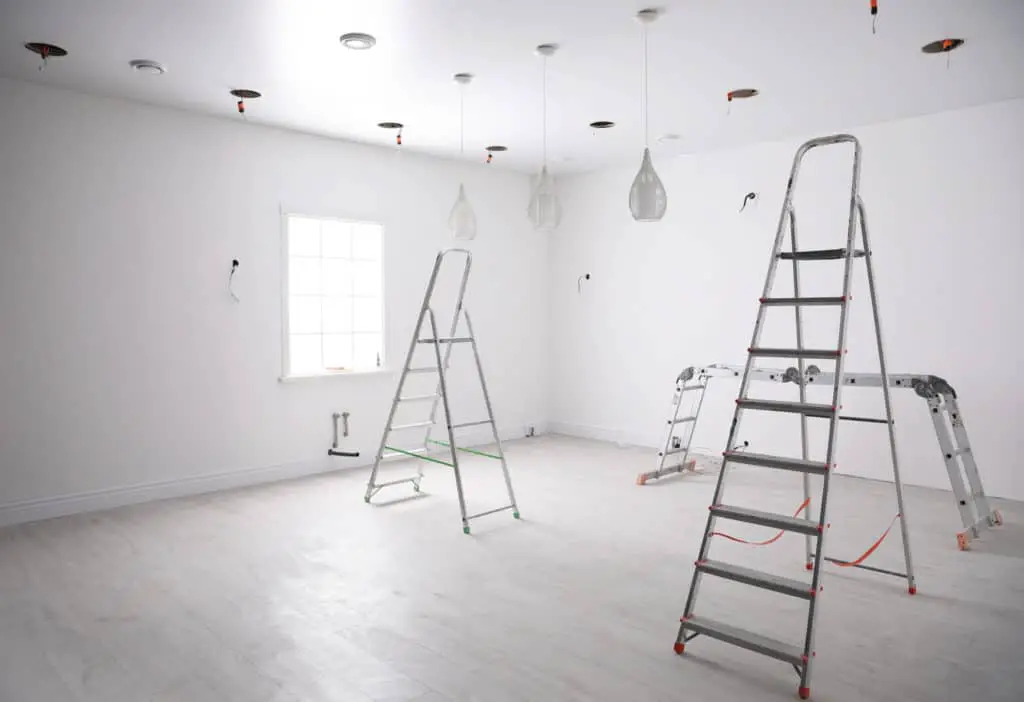As an electrician, we typically don’t get down to component-level repairs. If we attend a job to investigate a light that is overheating, often it is more economical for us to simply replace the fitting than drill down into the specifics of why the LED is not working.
That being said, on a personal level I like digging down into the details to find out what components are needed to make an LED light operate. A lighting salesman/technician was demonstrating to me a stripped-down LED light and explaining the importance of the heat sink in its correct operation.
This post is my investigation, coupled with the lighting technician’s explanation I received, to help others understand what an LED heat sink is and the reason LED lights need a heat sink.

The Function of Heat Sinks in LED Lighting
An LED heat sink is a device that absorbs the heat generated from the LED module and transfers it to the surrounding air. Heat sinks are typically made of aluminium or other heat-conductive materials and are essential as they help maintain the temperature of the LEDs and prevent overheating.
When LEDs are mounted on an aluminium base, it acts as heat spreader and is an integral part of the circuit board that aids in thermal conductivity. Heat sinks are designed to absorb and disperse excess heat away from the LED diode and into the heat sink.
Passive or active air then circulates around the heat sink to help cool it. If we mount a light fitting in the incorrect environment, this passive airflow is not able to carry out its cooling task correctly. I have often seen downlights in ceilings that have been covered by loft insulation. This is very dangerous for most light fittings as the LED light cannot disperse heat correctly through the insulation. It becomes a significant fire risk.
As well as the risk of fire, too much heat will damage the LED phosphor, resulting in lower light output, changes in colour, and a significant decrease in life expectancy. The phosphor is the coating used on the LED to change the colour from its natural blue state to the white or orange glow we prefer.
By using correct thermal management of LED lights it ensures that junction temperature within the circuit board stays relatively stable and at an optimum temperature. Preventing overheating is significantly better for the overall life of your LED lights and is a factor that most lighting salesmen/technicians are keen to demonstrate when they visit site.

The Various Designs of LED Heat Sinks
Active LED Heat Sinks
Active LED heat sinks use a fan or other mechanical device to increase airflow over the heat sink. This helps to dissipate heat more quickly, making them a good choice for high-power LED applications. The fan is usually powered by an external power source and can be noisy and require maintenance. However, active heat sinks can be very effective in reducing the temperature of the LED and increasing its lifespan.
I can’t recall too many LED light installations where I have come across active heat sinks being used although to be fair, I haven’t really been on the lookout for them. My understanding is that they are used in more industrial lights such as floodlights and high-bay lights. It’s probably a safe bet to assume the local football’s club floodlights have active heat sinks.
Passive LED Heat Sinks
Passive LED heat sinks rely on natural convection to dissipate heat. They are typically made from aluminium or copper and have a large surface area to increase heat dissipation. Passive heat sinks are generally more reliable and have a longer lifespan than active heat sinks since they have no moving parts. They are also quieter and require less maintenance.
As mentioned earlier these rely on the correct type of LED light fitting being placed in the correct location. Reading the manufacturer’s specifications before purchasing gives a good idea of the LED’s usage and limitations.

Integrated LED Heat Sinks
Integrated LED heat sinks combine the heat sink and LED module into a single unit. This reduces the number of components required and simplifies the design process. Integrated heat sinks can be either active or passive, and are available in a variety of shapes and sizes to fit different applications. They are often used in high-volume, cost-sensitive applications where space is limited.
With all the lighting manufacturers I meet the goal, and their biggest boast is always their ability to develop smaller and smaller LED lights. The overall footprint of LED lighting is significantly reduced with no diminishment in light output or additional glare that would be unacceptable.
Factors LED Designers Consider When Choosing an LED Heat Sink
When lighting manufacturers are choosing which type of LED heat sink to incorporate in their light fittings, there are several factors they must consider to ensure that it will be effective in dissipating heat away from the LED.
Size of the LED Heat Sink
The size of the heat sink is an important consideration as it affects the amount of heat it can dissipate. A larger heat sink will generally be more effective at dissipating heat than a smaller one. However, the size of the heat sink should also be appropriate for the size of the LED and the space in which it will be used.
As mentioned, all lighting manufacturers (along with the entire tech industry in general come to think of it) have the goal of reducing the overall footprint size of the LED lights, so physical size is a major consideration for them.
Material of the Heat Sink Balances Performance and Cost
The material of the heat sink is also important as it affects its thermal conductivity. Aluminum is a commonly used material for LED heat sinks as it has high thermal conductivity and is lightweight. Copper is another material that is sometimes used as it has an even higher thermal conductivity, but it is heavier and more expensive than aluminium. I also came across this cool article where designers are trialling a metal/carbon foam to act as a heat sink.
Thermal Resistance Needs to Work in Relation to Heat Generated
The thermal resistance of the heat sink is a measure of how much it resists the flow of heat. Lower thermal resistance is better as it allows heat to flow more easily from the LED to the heat sink. The thermal resistance of the heat sink should be matched to the thermal resistance of the LED to ensure that heat is effectively dissipated.
It stands to reason that if we use a high-output LED that is producing a lot of heat, we need the thermal resistance of the heat sink to be of reasonable quality and rating that it can handle the heat being thrown at it.

Fin Design can be Adjusted
The design of the fins on the heat sink can also affect its effectiveness. Fins increase the surface area of the heat sink, which allows more heat to be dissipated. The shape and size of the fins can also affect the flow of air around the heat sink, which can impact its cooling performance.
This paper discusses various experiments done in relation to the heat sink fins and their positioning to improve heat dissipation and performance.
How to Know if an LED Heat Sink has Failed
LED fittings are designed to last for many years. Most of the manufacturers I deal with guarantee their fittings for at least 5 years, with some now even willing to give 7-year guarantees on their LED lights. Even so, as LEDs have been around for a while now, replacing faulty or end-of-life units is becoming part and parcel of life as an electrician.
It is not always the LED’s fault it is failing. Sometimes it is the result of bug or insect ingress. However, if I attend a job and the LED light is displaying any of the symptoms below, I begin to suspect that the LED heat sink is the cause of the problem.
- The LED light is dimmer than usual, indicating that the heat sink is not dissipating heat properly.
- The heat sink fins are bent, broken, or corroded, which can affect its ability to transfer heat.
- The heat sink is discoloured, indicating that it has been exposed to high temperatures for an extended period of time.
- The LED light is flickering, which can be caused by a damaged heat sink affecting the electrical connection between the LED module and the power source.
I mentioned right a the start that it is unlikely I would attempt to replace the heat sink in a faulty LED light fitting. This is due to time constraints and the hourly charge for an electrcians time to attempt repairs such as these simply doesn’t make financial sense compared with the cost of replacing the entire LED light.
If replacing heat sinks with LEDs is something that interests you then I hope this has been useful and I’m hoping to have a go in my spare time myself next time I remove a faulty LED instead of throwing it in the WEEE waste.
